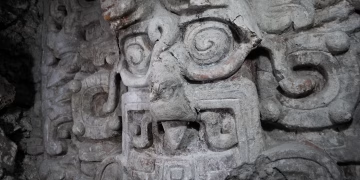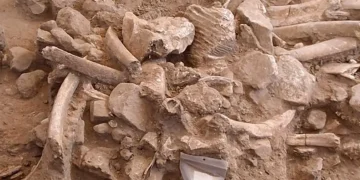Unearthing the Secrets of the Past: A Journey Through Archaeological Discoveries
Archaeology is a fascinating field that allows us to uncover the hidden secrets of our past. Through the careful excavation of ancient sites, archaeologists are able to piece together the puzzle of human history and gain insight into the lives of our ancestors. In this article, we will take a journey through some of the most significant archaeological discoveries in history, from the ancient pyramids of Egypt to the lost city of Pompeii. Join us as we explore the mysteries of the past and unearth the treasures of our collective heritage.
The Pyramids of Egypt: A Testament to Ancient Engineering
One of the most iconic archaeological sites in the world, the pyramids of Egypt have captured the imagination of people for centuries. Built over 4,500 years ago, these massive structures are a testament to the engineering prowess of the ancient Egyptians. The Great Pyramid of Giza, in particular, is a marvel of precision construction, with each stone carefully cut and placed to create a perfectly symmetrical monument.
Archaeologists have long been intrigued by the mysteries of the pyramids, from how they were built to what purpose they served. Recent discoveries have shed new light on these ancient wonders, revealing hidden chambers and secret passages within the pyramids. Through advanced imaging techniques and careful excavation, researchers have been able to uncover the secrets of these enigmatic structures, offering new insights into the lives of the pharaohs who commissioned their construction.
The Lost City of Pompeii: Preserving the Past in Ash and Stone
One of the most tragic and yet fascinating archaeological sites in the world, the ancient city of Pompeii was buried under a thick layer of volcanic ash when Mount Vesuvius erupted in 79 AD. The city lay hidden for centuries until its rediscovery in the 18th century, offering a rare glimpse into the daily life of a Roman city frozen in time.
Excavations at Pompeii have revealed a wealth of information about ancient Roman society, from the layout of the city streets to the artwork adorning the walls of houses. The preserved bodies of the city’s inhabitants offer a poignant reminder of the human cost of the disaster, while the artifacts unearthed from the ruins provide a window into the culture and customs of the time.
The Rosetta Stone: Decoding the Language of the Ancients
Discovered in 1799 during Napoleon’s campaign in Egypt, the Rosetta Stone is one of the most famous archaeological artifacts in history. Inscribed with three versions of a decree issued in 196 BC by King Ptolemy V, the stone proved to be the key to unlocking the mysteries of ancient Egyptian hieroglyphs.
By comparing the Greek text on the stone with the hieroglyphic and demotic scripts, scholars were able to decipher the meaning of the ancient Egyptian language for the first time in over a thousand years. This breakthrough in linguistic archaeology opened up a wealth of new knowledge about the culture and history of ancient Egypt, allowing researchers to translate a vast array of inscriptions and texts that had long remained unreadable.
The Terracotta Army: Guardians of the First Emperor
Discovered in 1974 near the tomb of China’s first emperor, Qin Shi Huang, the Terracotta Army is one of the most spectacular archaeological finds of the modern era. The army consists of thousands of life-sized terracotta soldiers, horses, and chariots arranged in battle formation, intended to accompany the emperor in the afterlife.
Excavations at the site have uncovered a vast necropolis containing the tomb of Qin Shi Huang, as well as numerous artifacts and treasures dating back to the Qin Dynasty. The Terracotta Army offers a glimpse into the military might and artistic sophistication of ancient China, showcasing the skill and craftsmanship of the artisans who created these magnificent sculptures.
Conclusion
Archaeology is a field that continues to yield new discoveries and insights into the past, enriching our understanding of human history and culture. From the majestic pyramids of Egypt to the tragic ruins of Pompeii, each archaeological site offers a window into the lives of our ancestors and the civilizations they built.
By unearthing the secrets of the past, archaeologists are able to piece together the puzzle of human history and gain a deeper appreciation for the achievements of those who came before us. Through careful excavation and analysis, researchers are able to preserve our collective heritage and ensure that the stories of the past are not lost to time.
As we continue to explore the mysteries of the past, let us remember the importance of preserving and protecting our archaeological heritage for future generations. By studying the artifacts and monuments left behind by our ancestors, we can gain a better understanding of where we come from and how far we have come as a society.
Join us on this journey through the wonders of archaeology and discover the hidden treasures of our past. Unearth the secrets of ancient civilizations and unlock the mysteries of the ages as we delve into the fascinating world of archaeological discoveries.
Together, let us celebrate the rich tapestry of human history and honor the legacy of those who came before us. By uncovering the secrets of the past, we can gain a deeper appreciation for the diversity and complexity of the human experience, connecting us to our shared heritage and the stories that define who we are.












